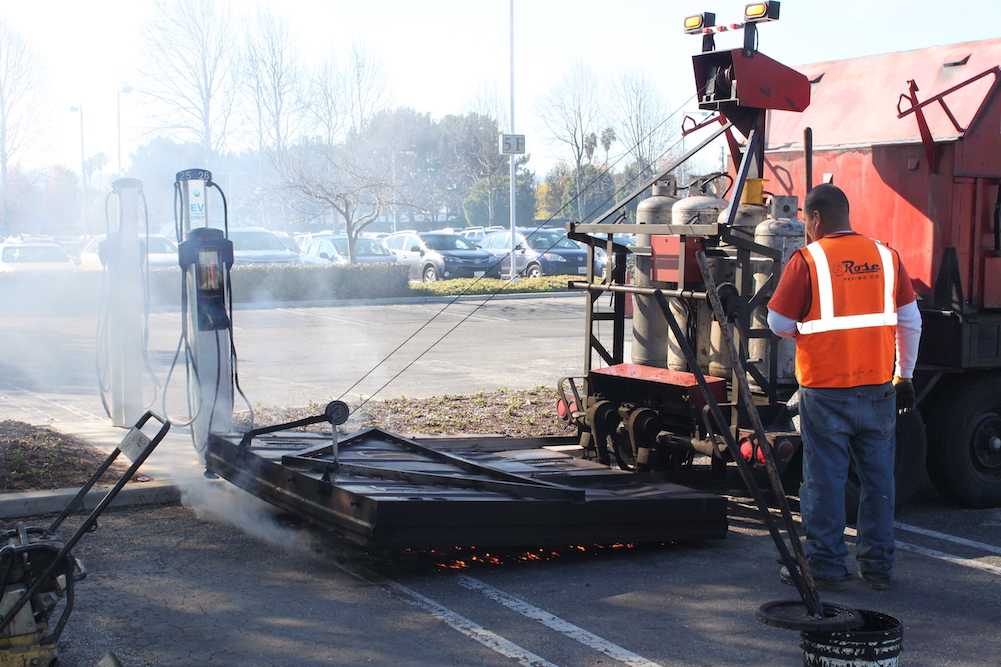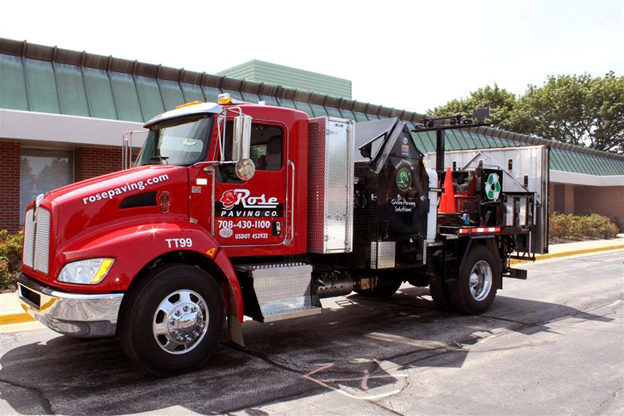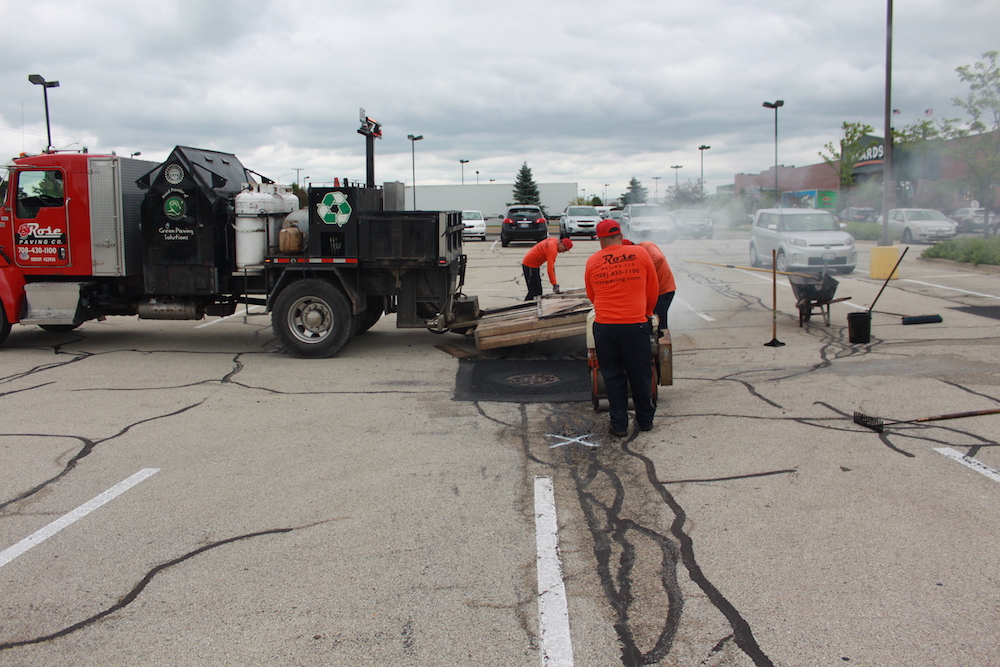Infrared Asphalt Repair – Why it’s Right for Your Pavement
Having a solid pavement management plan is the best way to protect and extend the life of your asphalt. As your pavement ages and more critical asphalt repairs become necessary, using our infrared repair service is an efficient, cost-effective solution.
When should I use infrared repair for my asphalt repair?
Infrared repair is a great option for critical repairs that don’t need more extensive resurfacing or replacement. As part of our pavement management plan services, Rose Paving recommends infrared repair for issues like potholes, pavement heaving, and uneven or rough driving surfaces.
How does infrared repair work?
Infrared asphalt repair is the process through which existing, compromised asphalt is heated and replenished before being mixed with new asphalt and compacted. Here’s a step-by-step guide to the repair process:
- The area to be treated is swept free from debris and thoroughly dried out, ensuring that nothing blocks the infrared repair process from reaching the asphalt surface.
- An infrared heater is placed above the damaged asphalt area and is heated for about 5-10 minutes. This heating time may vary depending on the existing aggregate, the season, and the depth of the damage. More extensive damage takes longer to treat.
- Once heated, the area to be repaired is raked, removing loose and failed aggregate.
- A rejuvenator is added to the remaining aggregate, replenishing oils lost through age and oxidization.
- New asphalt is added and mixed, ensuring the asphalt is graded to the proper level.
- Once mixed, the area is compacted with a multi-ton vibratory roller or plate, creating a seamless patch.
You can take a look at how our asphalt company performs infrared repairs in this video.
What are the benefits of infrared repair?
Due to the heat penetration of infrared rays, asphalt can be repaired and reclaimed without risk of burning, scaling, or separating the asphalt from the aggregate itself. Mixing the existing asphalt with new material results in a seamless repair, preventing moisture damage by eliminating the possibility of joints for water to seep into.
With fewer raw materials needed, this method of asphalt repair is more cost-effective. Infrared repair is also a more time-effective process than other repairs, as it takes less time to patch and the resulting repair can be driven on almost immediately.
What time of year can infrared repair be performed?
Infrared repair is the only treatment that can be implemented all year round – from the heat and humidity of the summer sun to freezing cold in winter, this method of asphalt repair is always viable. This makes Infrared repair ideal for asphalt that is exposed to all weather conditions, from Phoenix’s extreme heat to Denver’s snowy, freezing temperatures. This treatment can be used when it is too cold for hot mix alone, which also boosts its cost-effectiveness since asphalt repair costs often rise in the winter due to the increased amount of machinery needed to keep materials at the correct temperature. Infrared asphalt repair negates these additional costs.
Will Infrared Repair Fix all of my Asphalt Problems?
Infrared repair is an intermediate solution to pavement failure, not a permanent one. Unfortunately, infrared repair won’t solve all of your paving woes. If there are deeper structural or base problems with your asphalt, those can’t be fixed using this method. Infrared repair can be used to prevent existing damage from worsening, but areas with serious structural issues will likely fail again within 12-24 months of repair.
To schedule a maintenance visit, or if you have any questions, please get in touch with us. Don’t let the integrity of your parking lot degrade, contact Rose Paving today!







